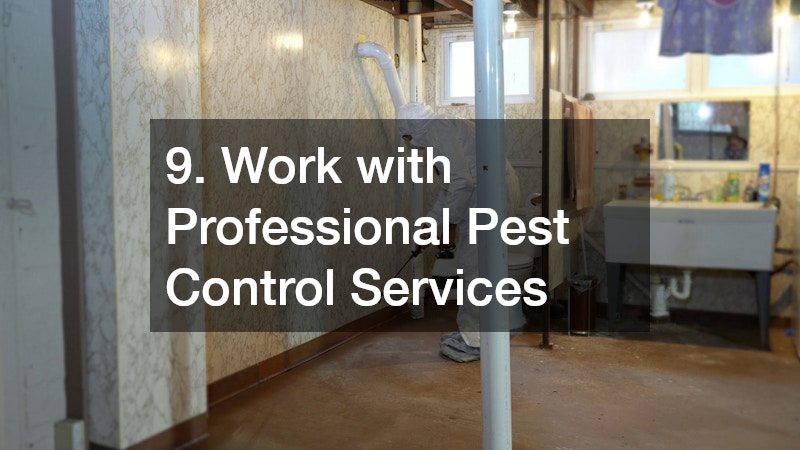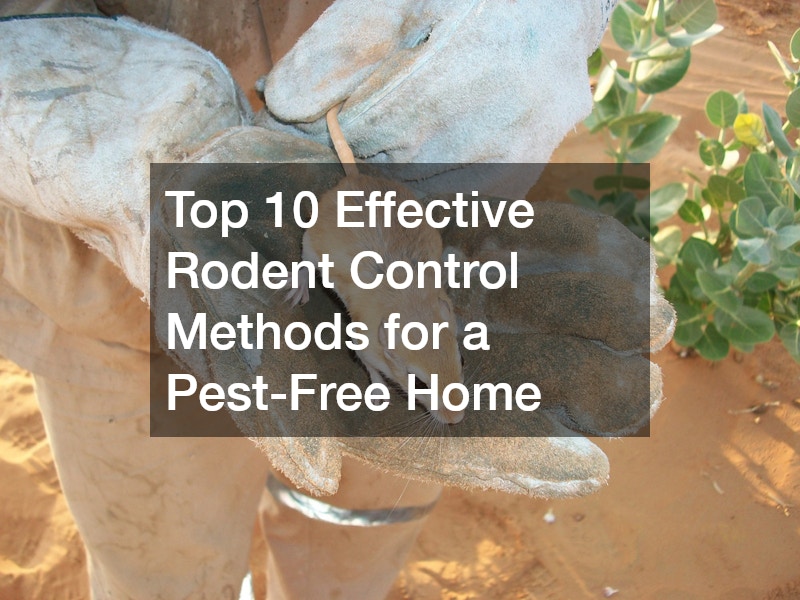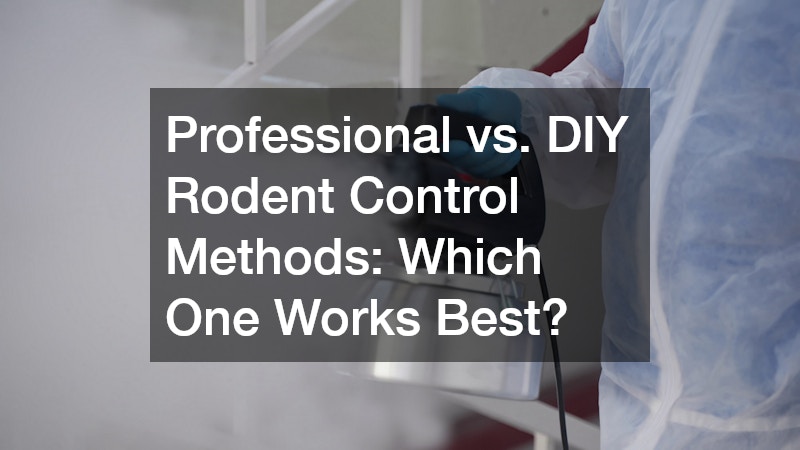Rodents are more than just a nuisance. They can cause significant damage to your property, contaminate food sources, and pose serious health risks to your family. Mice and rats are known to carry over 35 diseases, including hantavirus, leptospirosis, and salmonella, all of which can spread directly or indirectly to humans. The presence of rodents in your home is not only unsettling—it’s potentially dangerous.
Homeowners often discover infestations too late, when the problem has already escalated. This makes proactive rodent control essential for maintaining a safe, hygienic, and pest-free home. Whether you’re dealing with an existing issue or trying to prevent one, understanding the most effective rodent control methods can save you time, money, and stress. In this article, we’ll explore the top 10 proven strategies to keep rodents out of your living space for good.
1. Seal Entry Points: The First Line of Defense
Rodents are masters of infiltration. Mice can squeeze through openings as small as a dime, while rats can slip into holes the size of a quarter. If your home has even minor gaps or cracks, rodents will find a way in.
How to do it:
- Inspect your home’s foundation, attic, basement, roof, and vents for any openings.
- Use steel wool, hardware cloth, or caulk to fill small cracks.
- For larger gaps, consider using lath metal or cement.
- Pay close attention to where pipes, cables, and wires enter your home.
Pro Tip: Don’t overlook garage doors and dryer vents—they’re common rodent access points.
2. Keep Your Home Clean and Clutter-Free

Rodents are always in search of food, water, and shelter. Cluttered spaces and unsanitary conditions are perfect hiding spots and breeding grounds for them.
Best practices:
- Clean crumbs and spills immediately, especially in the kitchen and dining areas.
- Store food in airtight containers made of glass or metal.
- Avoid leaving pet food or water bowls out overnight.
- Regularly dispose of garbage and use bins with tight-fitting lids.
- Declutter storage areas like basements, attics, and garages.
Why it works: Without easy access to food or nesting materials, your home becomes less attractive to rodents.
3. Eliminate Outdoor Attractants
Rodent infestations often begin outside. Your yard, garden, or even compost bin can be a major draw for these pests.
What to check outdoors:
- Trim trees and shrubs that touch or overhang your house.
- Keep firewood stacks at least 20 feet from your home and elevated off the ground.
- Clean up birdseed, fallen fruits, and other debris regularly.
- Avoid overwatering, which creates standing water.
- Secure compost bins and outdoor trash cans.
Why this matters: A rodent-friendly yard can lead to an indoor infestation. Cut off the appeal outside to prevent problems inside.
4. Use Traps Strategically
When it comes to capturing rodents, traps are among the most effective and humane methods. There are various types available depending on your preferences and the severity of the problem.
Common types of traps:
- Snap traps: Quick and lethal. Best for known activity zones.
- Electric traps: Instant kill via electric shock. Easy to clean and reuse.
- Live traps: Capture rodents alive for relocation. Requires daily checks.
- Glue boards: Less recommended due to cruelty concerns, but still used.
Placement tips:
- Place traps along walls where rodents frequently travel.
- Use high-protein baits like peanut butter, bacon, or dried fruit.
- Change bait and trap locations periodically to maintain effectiveness.
5. Try Natural Rodent Repellents
Looking for chemical-free solutions? Natural repellents can be effective in deterring rodents, especially when combined with other control methods.
Popular natural deterrents:
- Peppermint oil: Rodents dislike its strong scent. Soak cotton balls and place them in problem areas.
- Ammonia: Mimics the scent of predators. Use with caution, especially around pets.
- Used cat litter: The smell of predators may scare rodents away.
- Vinegar and water spray: Useful for cleaning areas marked by rodent trails.
Limitations: Natural repellents are best for prevention, not active infestations. They should be reapplied regularly.
6. Install Ultrasonic Rodent Repellers
Ultrasonic devices emit high-frequency sound waves designed to repel rodents. These are often marketed as plug-and-play, chemical-free pest control solutions.
How they work:
- Emit sound at frequencies above 20 kHz, disturbing rodents’ communication and navigation.
- Usually cover specific ranges (e.g., one room or section of the home).
Do they work?
- Results are mixed. Some homeowners see a reduction in activity; others don’t.
- Most effective when used as part of a broader integrated pest management strategy.
Important note: Soundwaves don’t pass through walls or furniture well, so multiple units may be needed for full coverage.
7. Use Baits and Rodenticides Safely
For severe infestations, bait stations and rodenticides may be necessary. These are toxic chemicals designed to kill rodents after ingestion.
Types of rodenticides:
- Anticoagulants: Cause internal bleeding over time.
- Non-anticoagulants: Act faster but are often more toxic to other animals.
Safety precautions:
- Always follow manufacturer instructions.
- Place bait stations in tamper-proof containers, away from pets and children.
- Dispose of dead rodents properly to avoid secondary poisoning of wildlife.
When to use: Only in serious cases and preferably under the guidance of a pest control professional.
8. Maintain a Rodent-Free Kitchen
The kitchen is the most common area for rodent activity. Food accessibility and moisture make it an irresistible target.
Rodent control methods for kitchens:
- Seal cereal, grains, and snacks in metal or glass containers.
- Fix leaky pipes and faucets promptly.
- Vacuum and mop floors regularly to remove crumbs.
- Clean under appliances where food debris accumulates.
- Check for gnaw marks or droppings in cabinets and drawers.
Why it’s critical: Kitchens offer everything rodents need—food, water, and warmth. Keeping it clean and sealed is essential.
9. Work with Professional Pest Control Services

Sometimes, DIY methods aren’t enough. If you’re dealing with a recurring infestation or a large rodent population, hiring a pest control expert may be your best option.
What professionals offer:
- Comprehensive home inspection and customized action plans.
- Access to commercial-grade traps and treatments.
- Ongoing monitoring and follow-up services.
- Expert advice on long-term prevention.
Choosing the right service:
- Look for licensed, insured, and certified pest control companies.
- Read online reviews and ask for referrals.
- Ask about eco-friendly or pet-safe options.
Cost vs benefit: While hiring a pro might seem costly, it’s often more affordable than dealing with the damage rodents cause over time.
10. Monitor Regularly to Prevent Reinfestation
Rodent control is not a one-time fix. Regular monitoring and maintenance are necessary to ensure your home remains rodent-free.
Ongoing prevention tips:
- Schedule monthly or seasonal home inspections.
- Keep an eye out for telltale signs: droppings, gnaw marks, grease trails, and scratching noises.
- Refresh repellents, traps, and sealants as needed.
- Reinforce cleanliness and outdoor control efforts.
- Educate all household members on rodent prevention practices.
Why it works: The best way to control rodents is to prevent them from coming back. Ongoing diligence ensures long-term success.
Understanding Rodent Behavior to Strengthen Prevention
Effective rodent control starts with understanding how rodents think and act. Mice and rats are nocturnal, curious, and highly adaptable. They tend to travel along walls, seek out warm and quiet areas for nesting, and will explore any new item (like traps or food) with caution. Knowing this helps you place traps in the right locations and time your prevention strategies effectively.
Key behavioral insights:
- Rodents are wary of unfamiliar objects—“pre-baiting” traps can help.
- They follow scent trails—cleaning heavily trafficked areas reduces recurrence.
- Mice are climbers; rats are diggers—entry points can be found at all levels.
By aligning your control methods with rodent behavior, your efforts become more strategic and successful.
Common Signs of a Rodent Infestation to Watch For
Spotting a rodent early is half the battle. Homeowners often miss the subtle warning signs until a full-blown infestation occurs. Learning to identify these early indicators allows you to act before damage or contamination gets worse.
Look for these signs:
- Droppings: Small, dark pellets in cupboards, drawers, or along walls.
- Gnaw marks: On food packaging, wires, wood, or furniture.
- Grease trails: Dark smudges along baseboards or walls from repeated travel.
- Noises: Scratching, scurrying, or squeaking sounds, especially at night.
- Nests: Made from shredded paper, insulation, or fabric in hidden spaces.
If you spot any combination of these, it’s time to implement control measures immediately—or call a professional.
The Risks of Ignoring Rodent Infestations
Some homeowners dismiss the occasional mouse sighting or rodent noise as harmless. However, ignoring the problem can lead to serious consequences. Rodents reproduce rapidly—one pair of mice can produce dozens of offspring in a few months. A small problem can quickly escalate into a widespread infestation.
What happens if you delay action:
- Health hazards: Rodents can transmit diseases through droppings, urine, or bites.
- Fire risk: Chewed electrical wires can lead to dangerous short circuits.
- Structural damage: Rodents burrow into insulation, woodwork, and drywall.
- Contaminated food: Pantries may be compromised, leading to waste and health concerns.
Acting swiftly not only protects your home but also ensures the safety and well-being of everyone in it.
Which Rodent Control Methods Are Right for You?
Each home is unique, and so is each infestation. The most effective rodent control methods often involve a combination of tactics—sealing entry points, maintaining cleanliness, using traps or repellents, and consulting professionals when necessary. As a homeowner, your goal should be to create an environment where rodents find nothing of interest.
Start with the basics: inspect your property, eliminate attractants, and apply the methods that suit your comfort level and needs. For long-term protection, integrate multiple strategies and stay vigilant year-round. With the right approach, a pest-free home isn’t just possible—it’s achievable.

